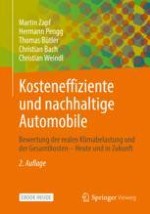2021 | OriginalPaper | Chapter
8. Executive Summary
Authors : Martin Zapf, Hermann Pengg, Thomas Bütler, Christian Bach, Christian Weindl
Published in: Kosteneffiziente und nachhaltige Automobile
Publisher: Springer Fachmedien Wiesbaden
Activate our intelligent search to find suitable subject content or patents.
Select sections of text to find matching patents with Artificial Intelligence. powered by
Select sections of text to find additional relevant content using AI-assisted search. powered by
